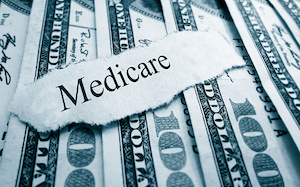In October 2019, President Donald Trump signed an executive order containing changes that the U.S. Department of Health and Human Services (HHS) is directed to make to improve the Medicare program. Its official name is Protecting and Improving Medicare for Our Nation’s Seniors.
This executive order:
- places an emphasis on Medicare Advantage plans, which is a form of private insurance
- could expand access to telehealth services
- calls for fewer barriers to Medicare medical savings accounts
- pushes for a health insurance payment model that would allow Medicare beneficiaries to benefit from the savings, perhaps through rebates
- focuses on fighting waste and fraud
AARP published an overview of this executive order, noting that although the order has an emphasis on ways to protect and improve Medicare, specifics of solutions still need to be devised. The president has asked HHS Secretary Alex Azar to determine methods to address policies contained in the executive order in a way that provides intended benefits.
Lindsey Copeland, the federal policy director for the Medicare Rights Center and advocate for affordable health insurance for older adults, notes that it isn’t yet clear how the order would translate into policies that could be put into action.
“We look forward to reviewing the details of the executive order,” he said, “and to working with policymakers to promote informed choices, strengthening beneficiary decision-making and expanding benefits and care innovations across the Medicare program.”
Insights by National Public Radio
Reporting by NPR echoes how the order doesn’t contain specific solutions. At a high level, it’s intended to provide support to privatized insurance.
Privatized Medicare (Medicare Advantage plans) has been growing in popularity. In fact, more than 20 million Americans are enrolled in a Medicare Advantage plan, with enrollment numbers having nearly doubled over the past decade; about 1 in 5 enrollees have this health insurance through an employer or union-sponsored plan.
The number of plan options has been increasing, and the executive order calls for the creation of even more options, along with innovative payment plans and designs, and easy enrollment for people with Medicare.
Telehealth Services Component
Although specifics need to be worked out in this portion of the executive order as well, telehealth is expected to play a larger role in service delivery. The New England Journal of Medicine defines telehealth as the “delivery and facilitation of health and health-related services including medical care, provider and patient education, health information services, and self-care via telecommunications and digital communication technologies. Live video conferencing, mobile health apps, ‘store and forward’ electronic transmission, and remote patient monitoring (RPM) are examples of technologies used in telehealth.”
As part of the president’s order, medical devices may be brought to market more quickly, as officials have been directed to cut steps between Food and Drug Administration approval of the devices and when a coverage decision is made.
More About the Medicare Executive Order
The order also states that traditional Medicare programs cannot be promoted or otherwise receive advantages that go beyond what privatized insurance plans receive — meaning Medicare Advantage options.
Azar shares how this order means that HHS will “examine all practices, regulations and guidance to make sure that we are not steering people into fee-for-service as opposed to giving them a genuine choice of Medicare Advantage or fee-for-service.”
As part of this process, HHS will also look at the care being provided by nurse practitioners and medical assistants. Allowing them to practice at the full extent of their licenses would, according to Azar, “really enhance access to care, enhance provider availability for all Medicare beneficiaries, including in fee-for-service, and really help, especially with the rural healthcare crisis.”
Stay tuned!











